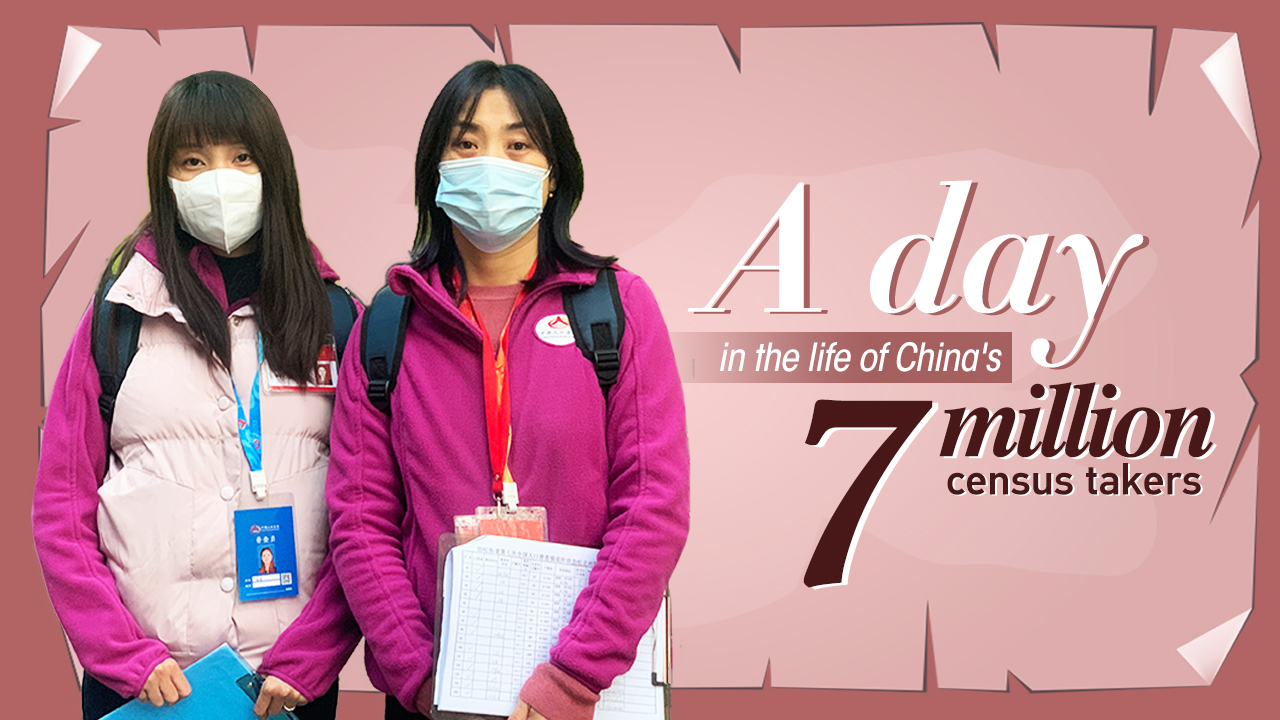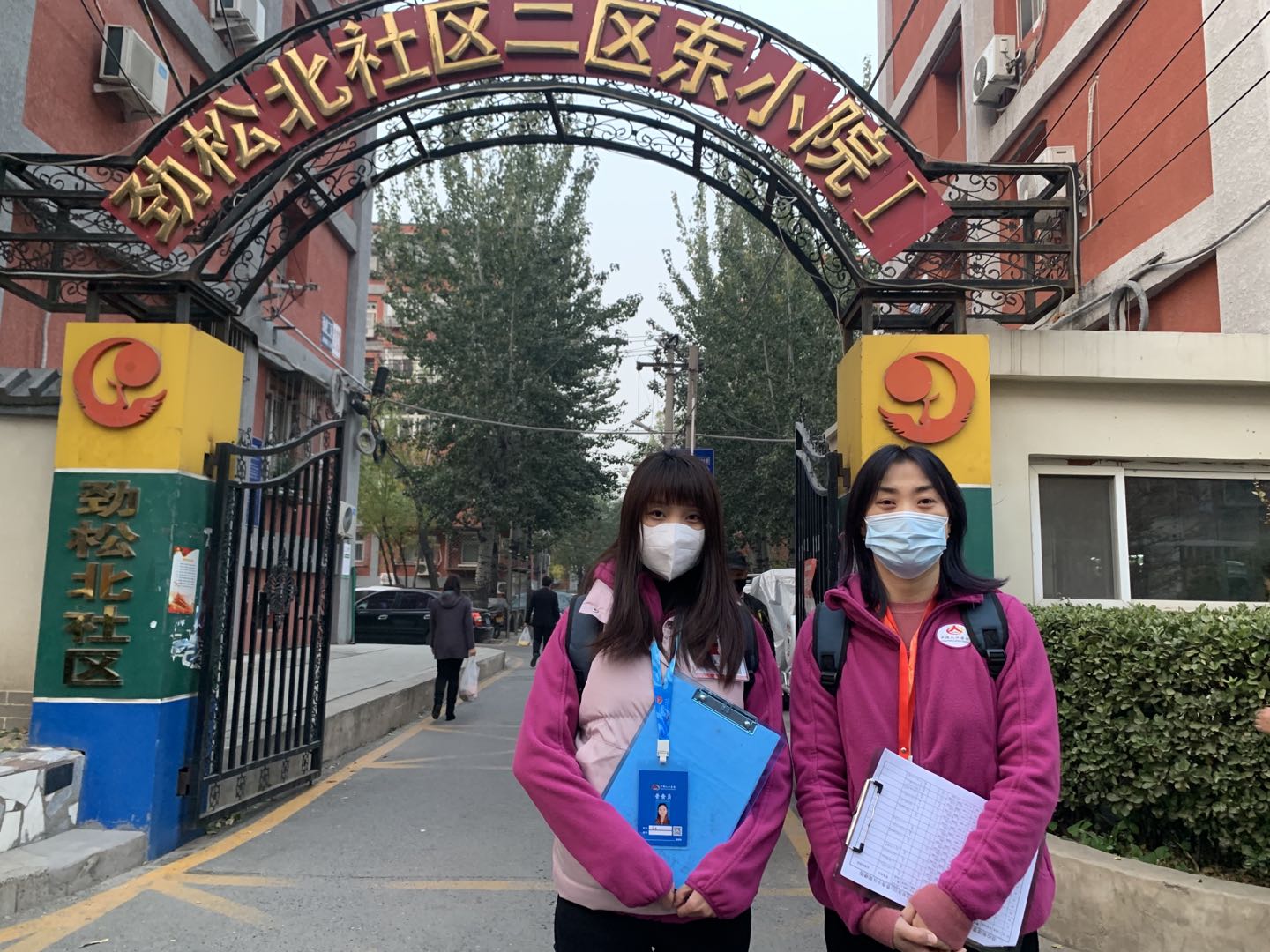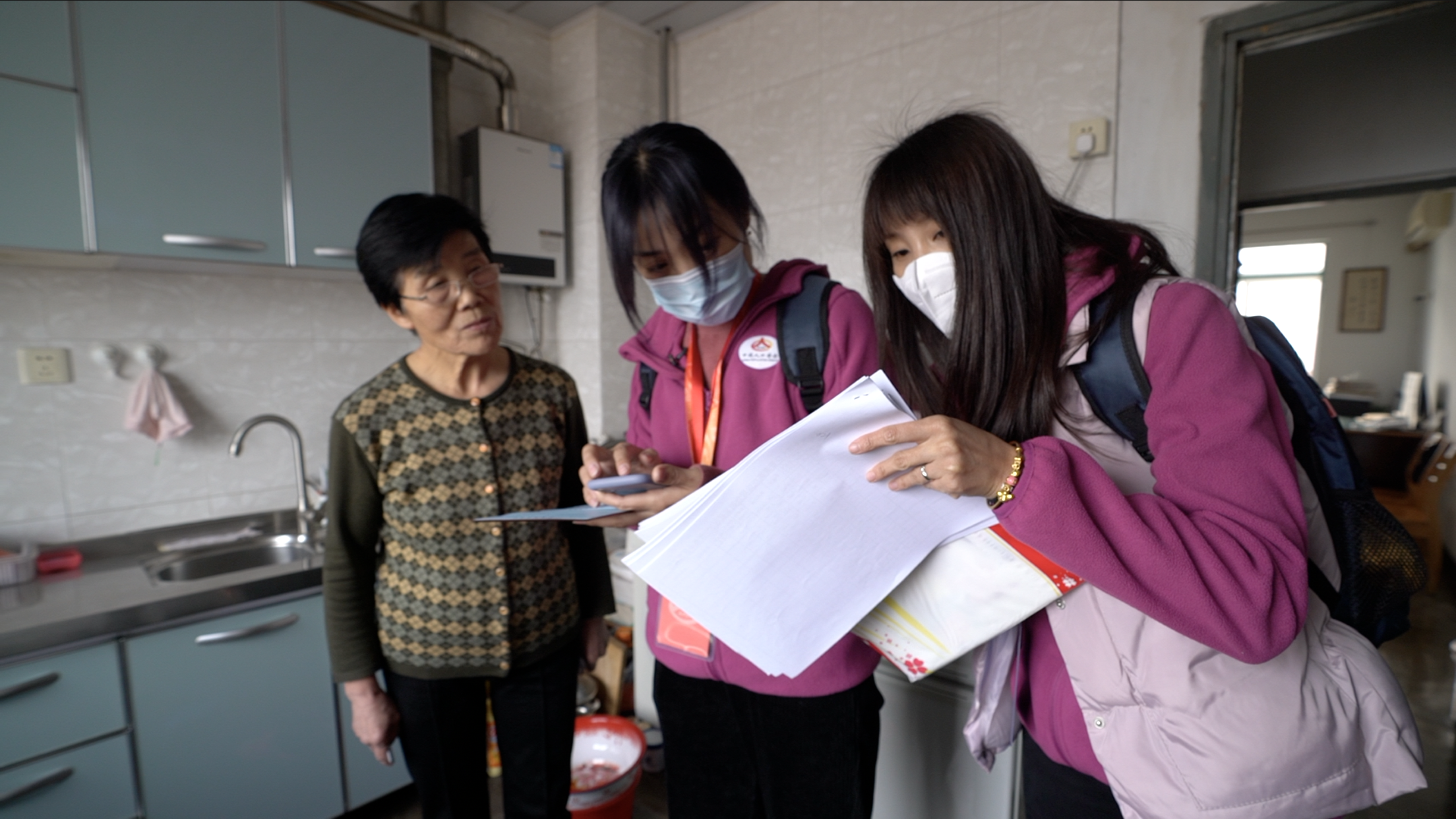04:01

A nationwide census is an important means to take the pulse of a nation and uncover its changing demographics.
China officially started its seventh national census on November 1. Registration of short forms ended at midnight on November 15, while registration of long forms officially began on November 16.
China is a large country with a population of about 1.4 billion. In order to smoothly carry out and complete the census within the stipulated time, there are more than seven million census takers, or enumerators, across the country working to get the job done.
What are the new features of this national census? What is the scientific method this time? And how do the seven million enumerators carry out their work every day? CGTN reporter Zong Shukang spoke with Qin Fang and Chang Ran, two enumerators from the Jinsong North Community in Chaoyang District, Beijing, to find the answers.
"There are 115,000 census takers in Beijing; But only 12 in our community are responsible for the census of more than 4,000 families," Qin Fang told CGTN.

Qin Fang (R) and Chang Ran (L), two enumerators in the Jinsong North Community, Chaoyang District, Beijing, November 11, 2020. /CGTN
Qin Fang (R) and Chang Ran (L), two enumerators in the Jinsong North Community, Chaoyang District, Beijing, November 11, 2020. /CGTN
Ensuring accuracy of information
Based on the living and working habits of each household, enumerators schedule their visits for when people are most likely to be home.
"We usually arrive at about 9 a.m., prepare the materials needed and the gifts (daily necessities for residents) in the office, then go knock on doors at around 10 a.m.," said Qin. "On weekdays, most young people are away from home in the early morning. The elderly usually go to exercise or buy vegetables in the morning and go back home around 10 a.m."
"If nobody answers when we knock on the door in the daytime, we will go back at around 8 p.m. when most of the people who go to work have returned," Qin said.
To avoid disturbing other residents, they generally stop taking the census at 9 p.m., and return to the office to sort out materials and prepare for the next workday, which may stretch until 10 p.m.

The Jinsong North community. /CGTN
The Jinsong North community. /CGTN
Many young people are busy on workdays, meaning most enumerators must work on weekends to catch them at home.
"Although working overtime is harder, it's very efficient to work on weekends. We just need to go directly to the targeted residents who are not at home on workdays," Qin said.
For residents who are not at home, a notice displaying the phone numbers of the enumerator and community as well as other relevant information will be posted to their door. After the residents return home and see the notice, they can call the numbers to complete the census. The forms can also be completed using a smartphone and an online self-reporting system.
"For unresponsive houses, we will return at least five times to register them. After that, if we still cannot reach the people living in the house, we will file a report with the police after the census is over. With the help of the police department, we will open the door at a certain time to confirm the situation inside."
Private is secure
Because the census records personal information, such as ID number, age, occupation and address, many residents were worried about information leakage and some even refused to cooperate.
In addition, some criminals pretended to be enumerators and attempted to defraud residents of their personal information.

Census takers help elderly residents check their details in Jinsong North Community, Chaoyang District, Beijing, China, November 11, 2020. /CGTN
Census takers help elderly residents check their details in Jinsong North Community, Chaoyang District, Beijing, China, November 11, 2020. /CGTN
"To prevent this, all neighborhood committees post notices informing residents of the specific time of the census and the identity of the enumerator in charge of each building. Residents can go directly to the neighborhood committee or call to confirm the information of the census takers," Qin said.
Each enumerator wears the same uniform marked with the words "Seventh National Census Taker," and they will always carry a special card showing their details. Residents can also call the community to check their identities, Chang Ran told CGTN.
Regarding personal information, an enumerator only has access to the information of residents in the area he or she is responsible for, and each enumerator has signed a confidentiality agreement to ensure the security of the information, Chang added.
"This census has adopted an electronic method to carry out registration. Through the comprehensive use of electronic collection, the data is directly uploaded to the country in real time, effectively eliminating possible human interference in intermediate links, reducing interruption for census subjects, and ensuring information security," Qin said.
For those who do not know how to use electronic devices, enumerators will teach and help them complete the online registration. Before the end of each information entry, enumerators will reconfirm the accuracy with them.

The online registration system for the seventh national census. /CGTN
The online registration system for the seventh national census. /CGTN
This census has also developed an independent reporting procedure. Residents can choose one of two options: online self-reporting or a return visit by an enumerator.
"Although census work is very hard, as a grassroots census taker, we are very happy to be able to contribute to the community," Qin and Chang said.
The seventh census is of great significance
"The census – a comprehensive investigation of the number, structure and distribution of our country's population, and an accurate grasp of the characteristics of population trends – can provide scientific and accurate population information support for the scientific formulation of the national economic and social development plan for the 14th Five-Year Plan," said Li Xiaochao, deputy director of the National Bureau of Statistics of China.
China's population development is now in a transition period, said Li, noting that the census is vital to macro decision-making and since the sixth national census in 2010, the internal driving force and external conditions of China's population have changed significantly.
"Population growth has slowed down, the fluctuation of the working-age population has eased, and the degree of aging has increased," he explained.
Understanding the country's population trends can help improve development policies as well as promote high-quality development, Li noted.
(Video editors: Liu Ke, Wu Chutian; Cameraman: Danzeng Jiancuo)

